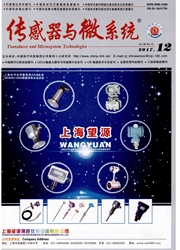

 中文摘要:
中文摘要:
头皮脑电(EEG)信号反映了大脑皮层神经元细胞群自发性节律性的电生理活动,含有丰富的生理与病理信息,是临床脑神经与精神疾病诊断的重要依据。针对抑郁症的研究和诊断中缺少客观有效的量化参数和指标的状况,提出一种基于小波包分解节点重构信号的功率谱熵值(记为W值)的脑电信号分析方法,并利用此方法对静息态的脑电信号进行计算和分析。实验和分析结果表明:抑郁症患者脑电信号S32节点(频率24-32 Hz)的熵值(置信区间[0.012 9,0.017 6])在部分脑区显著大于正常健康人(置信区间[0.024 6,0.030 3]),显示抑郁症病人快波节律的能量分布存在弥散性,符合现在关于抑郁症患者自我调节能力减弱的发病机制。对结果进行了T检验统计分析,证明了这种辨别方法的准确性和可行性,将为抑郁症疾病检测诊断提供有效的量化物理指标。
 英文摘要:
英文摘要:
Scalp electroencephalography( EEG) signals reflects the spontaneous rhythmic electrical physiological activities of cerebral cortex neurons,which are rich in physiological and pathological information,and important for clinical neurological and mental disease diagnosis. Aiming at condition that the depression study and diagnosis are lack of deffective quantitative parameters and quantitative indicators,present a new EEG signal analysis method based on wavelet packet decomposition,power spectrum entropy,calculate the power spectral entropy value,W value of node reconstruction signal power spectrum. Apply this method to calculate and analyze the resting EEG signals. The results show that the W value of S32 wavelet packet node with frequency range of 24 - 32 Hz with depression patients are significantly larger than normal healthy people in some brain areas. It indicates that the distribution of fast EEG rhythm wave energy is more complicated and dispersive in depression patients,confirming to the pathogenesis about weak self-regulated behavior about depression patients. T-test statistical analysis is performed to prove the feasibility and accuracy of this method,provide an objective and effective quantitative physical feature indicator for depression disease diagnosis.
 同期刊论文项目
同期刊论文项目
 同项目期刊论文
同项目期刊论文
 期刊信息
期刊信息
